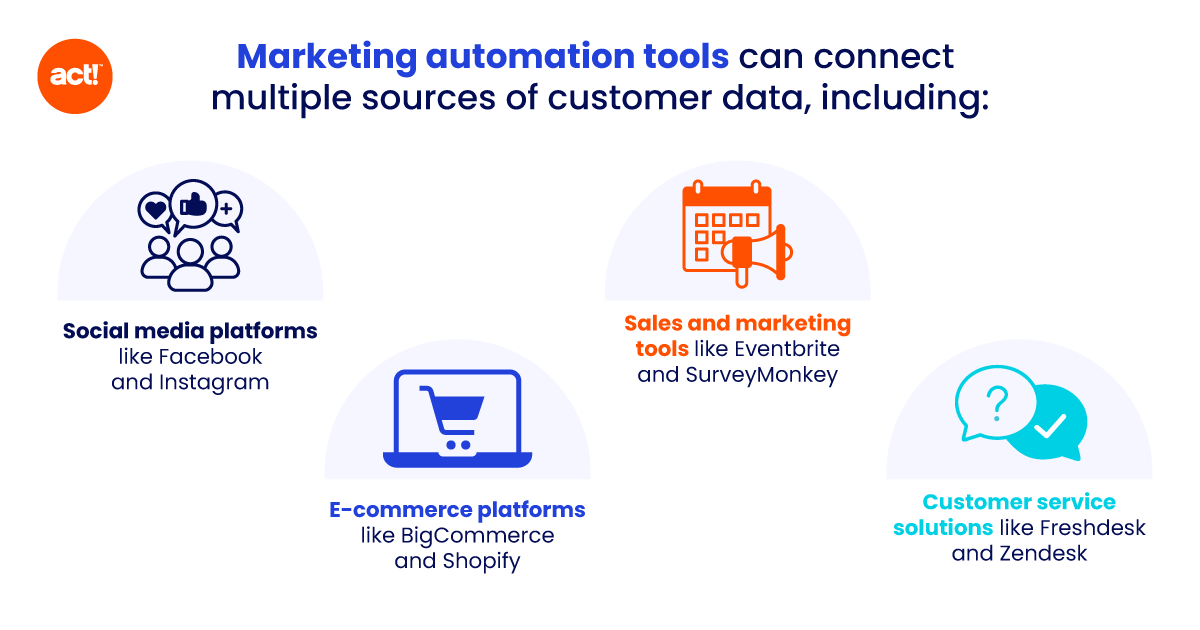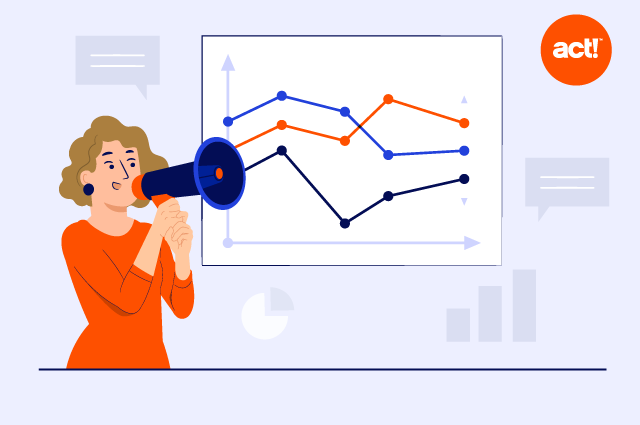
In an ideal world, your target customers would be upfront about why they engaged (or didn’t) with your latest marketing campaign.
But the reality? It’s starkly different.
You’ve got to decode their likes, dislikes, interests, and preferences and implement campaigns that resonate with them.
What if there were a way to eliminate this guesswork?
That’s where marketing analytics can be of help. Marketing analytics tools collect and analyse data from various sources to measure the performance of your marketing campaigns. And adding marketing automation to the mix can help you get things done on autopilot.
So how does it work? Let’s find out.
What is marketing analytics?
Conducting marketing analytics is the process of collecting, processing, and analysing data related to various marketing tasks.
Typically, marketing analytics tools collect data relating to customer interactions from digital marketing channels like social media, email campaigns, and customer support tickets. They also use data from traditional sources, such as customer surveys, focus groups, interviews, and industry reports.
A marketing analytics workflow involves setting clear marketing goals and key performance indicators (KPIs) to help you achieve your business needs. Depending on your goals, you can track metrics like conversion rates, customer acquisition costs, and customer lifetime value.
With marketing analytics, you can pinpoint what’s working in a particular campaign (and what isn’t). Plus, you can identify seasonal patterns and trends in campaign performance. Based on these, you can make informed decisions and avoid related mistakes to maximise your marketing return on investment (ROI). This is particularly beneficial for business owners and SMBs with limited budgets.
Also, marketing analytics provide you with deeper insights into consumer preferences. You can create customer segmentation based on shared preferences and build personalised marketing strategies for each stage of the customer journey.
It’s an excellent way for today’s small businesses to gain an edge over competitors and build a meaningful and positive customer experience that fosters strong relationships with existing and potential customers by meeting their specific needs.
Modern marketing analytics tools even offer predictive functionalities that let you forecast future trends and devise an action plan to achieve the right outcomes. Tracking and measuring the right metrics is integral to deriving meaningful insights from marketing analytics. It’s also crucial to clean, format, and validate the data gathered from different channels.
The challenges of marketing analytics
Despite its benefits, many companies have been slow to adopt marketing analytics. A recent Gartner survey revealed that marketing analytics only influenced 53 percent of marketing decisions.
One of the roadblocks to the adoption of marketing analytics workflows is the lack of quality data. Manually entering data into analytics tools is time-consuming and error-prone.
Marketers at small and medium-sized businesses spend most of their time integrating inconsistent data from different sources and compiling reports to understand user behaviour instead of doing what they’re good at—creating campaigns that drive results.
Then, there’s the issue of cognitive biases among marketing decision-makers. In the same Gartner survey, a third of the respondents revealed that decision-makers cherry-pick data so the results support their preconceived notions.
What if there was a way to streamline the process of collecting and analysing data and having confidence in your decision-making? You’ll be relieved to hear that marketing automation tools help you do exactly that plus so much more.
Why you should automate marketing analytics
Automating marketing analytics involves the use of technologies like artificial intelligence and machine learning to streamline repetitive tasks, such as:
- Collecting and processing data from multiple sources
- Visualising the collected data and generating reports
- Extracting actionable insights to optimise marketing efforts
Integrating marketing automation and analytics gives marketers more time to focus on improving campaign performance. With marketing automation software doing the groundwork, you can devote more time to creative and strategic tasks.
The best part?
Marketing automation tools are designed for scalability to handle large volumes of data. That means you can increase your analytics workflows without jeopardising efficiency and simplify campaign management.
Automated workflows also minimise human error and provide more reliable and accurate insights. Plus, marketing teams can track campaign data in real time and make necessary adjustments to optimise performance.
How to automate campaign performance tracking and analysis

Start with outlining clear goals and maintaining quality data. Next, integrate data from different sources into a centralised dashboard. A CRM (customer relationship management) platform, with built-in marketing automation capabilities and extensive third-party integrations, can come in handy here.
The best marketing automation tools can connect multiple sources of customer data, including:
- Social media platforms like Facebook and Instagram
- E-commerce platforms like BigCommerce and Shopify
- Sales and marketing tools like Eventbrite and SurveyMonkey
- Customer service solutions like Freshdesk and Zendesk
With these CRM integrations, you get a complete view of new, existing, and potential customers, including their purchase patterns and service history. You can automatically move information between the CRM system and third-party apps to ensure that the data is up-to-date and error-free.
Also, with a user-friendly, fully integrated marketing automation and CRM platform, you can leverage numerous lead management strategies such as lead scoring, cross-channel marketing campaigns, and response-driven lead nurturing workflows. It also comes in handy for creating landing pages and web forms for lead generation and doing A/B testing to identify the best-performing versions.
Additionally, if you opt for an integrated CRM and marketing automation platform, it’ll provide real-time campaign performance metrics, such as open rates and bounces. Adding this data to a visualisation tool like Power BI or Tableau can help you generate reports and extract actionable insights.
Most marketing automation platforms offer built-in dashboards and customisable reports to help you monitor relevant metrics. From drag-and-drop builders to drip campaigns and sales funnel tracking, they come with a bunch of tools to help you scale your marketing campaigns.
Besides CRM and marketing automation software, it’s also a good idea to use predictive analytics solutions. These tools use machine learning models to forecast future consumer behaviour and purchase patterns.
Supercharge your marketing analytics with Act!
Automated marketing analytics offers several benefits to businesses, including improved accuracy and efficiency. With a marketing automation platform like Act!, you can create a centralised repository of customer data from various sources and launch tailored marketing campaigns.
Plus, you can track real-time campaign performance metrics and use Act!’s suite of third-party integrations to turn your data into meaningful, actionable insights.
Start your 14-day free trial to see our platform in action and then choose from our various pricing plans.







